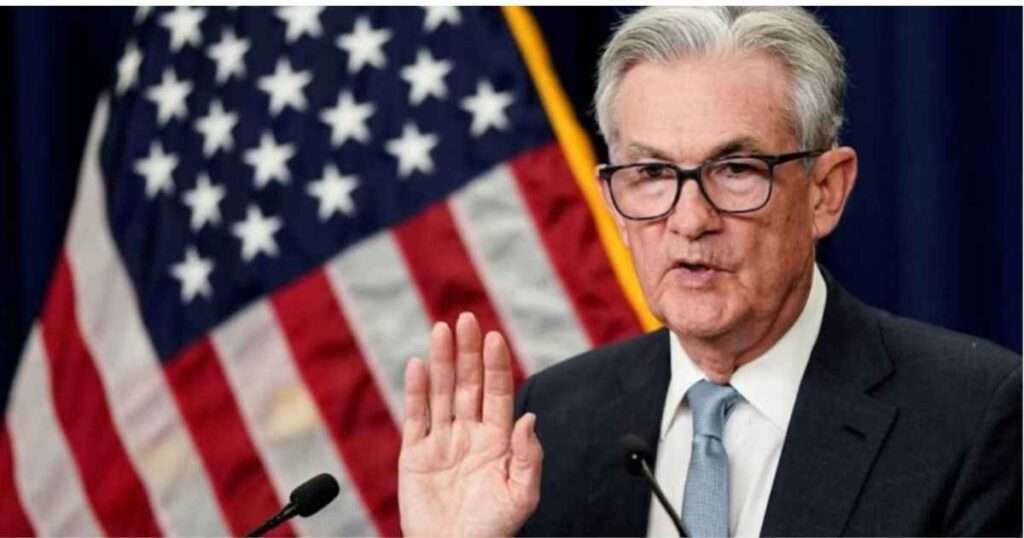Overview
The Federal Open Market Committee (FOMC) is getting ready for its forthcoming meeting on January 30 and 31 in the fast-paced world of finance. There is a lot of conjecture about the future direction of interest rates and whether or not talks of a possible rate reduction will take center stage. Policymakers are navigating a journey of economic choices, carefully considering the need for rate changes in response to changing inflation patterns, while investors are anxious for answers. Let’s examine the nuances of the case and the prospects of the Federal Reserve.

Examining Present Expectations: FOMC
The setting is set for a nuanced conversation with interest rates projected to remain unchanged for the fourth straight meeting. To set the stage for discussions on the future course of the economy, FOMC’s Chairman Jerome Powell will deliver the Monetary Policy Report to the Senate Banking Committee.
The Role of Policymakers as Parents
In a sense, FOMC’s Chairman Powell and his associates are acting like parents, answering the incessant questions of investors who ask, “Are we there yet?” with much anticipation. The methodical and repeated response implies that while change is coming, it won’t happen anytime soon.
What to Expect from the FOMC’s Meeting on January 30-31
The FOMC’s attention turns from the current situation to plans, especially for the meeting in March and beyond. It has been suggested by policymakers that they may start talking about the general guidelines for cutting rates in the first half of 2024 if inflation turns out to be different from the forecast.
A balancing act: Rate reductions in store
Although rate reductions are expected, authorities have not indicated that they plan to set up a rate decrease for March in particular. This cautious approach allows for future sessions to be adjusted in light of any changes in the economy.
The viewpoint of the President of the San Francisco Fed
In a recent remark, President Mary Daly of the San Francisco Fed emphasized the need to exercise patient, calling it “premature” to anticipate impending interest-rate decreases. She emphasizes the need for more data showing a steady inflation trend returning to the 2% objective before the policy is eased.
Powell’s Tactical Method: Adjusting Policies
Powell and associates take a calculated stance, stressing that there is no pressing urgency to halt the economic downturn. Rather, they want to adjust policy to account for a significant decline in inflation from its multidecade peak that occurred a year and a half ago.
Governor Waller’s Upbeat Prognosis Fed Governor Christopher Waller’s upbeat outlook, presented at the Brookings Institution, supports the idea that there is no urgency to lower rates quickly since the job markets and economy are doing well. Waller’s thoughts are consistent with the most recent reports of higher-than-anticipated retail sales in December.
Investor Response and Anticipations
As a result of Governor Waller’s remarks and encouraging economic data, investors lowered their expectations for a rate cut in March. Once thought to be probable, the chances have somewhat changed, suggesting a more nuanced view of the market.
The Path Ahead: A Steady Drop to 2%
Powell’s cautious approach highlights the lack of urgency in making quick changes as inflation steadily declines near the 2% objective. The Fed’s intention to maintain economic stability while taking into account the changing nature of inflation is reflected in this methodical approach.
What time is the next FOMC meeting?
The FOMC will meet again on January 30 and 31. It is generally anticipated that interest rates will stay unchanged at this meeting.
Should rates be lowered in March?
Although there have been talks regarding rate reductions, authorities have not yet disclosed a concrete strategy to set up a rate decrease for March.
Which variables will affect the decision to reduce rates?
Rate reduction decisions will be based on indicators of a continuous inflation trajectory down to 2% as well as changes in the economy.
Why does Mary Daly, President of the San Francisco Fed, think that rate decreases are “premature”?
Daly highlights that before contemplating interest-rate reductions, further proof of inflation’s steady track is required.
When is the first rate decrease expected, according to Ellen Zentner, chief US economist at Morgan Stanley?
Zentner notes that patience is necessary given the present state of the economy and expects the first rate decrease to occur in June.
For what reason does Fed Governor Christopher Waller think that rate decreases will be postponed?
Waller’s confidence is based on the robust labor markets and economic activity, as well as the inflation rate steadily declining to 2%.
In summary
The scenario for possible rate reduction is developing as the FOMC gets closer to its meeting on January 30-31. Under Chairman Powell’s direction, decision-makers negotiate a precarious economic journey while carefully considering whether changes are necessary. The Fed seeks to preserve stability while making adjustments to the changing inflation picture using a methodical and patient approach. The general belief among investors as they wait for the results is that while rate changes are imminent, the first reduction may be purposefully postponed for the time being.
Open Your Demat Account with Discount Brokers:
ZERODHA 1) : https://zerodha.com/open-account?c=EJ4366
Angelone 2) : https://tinyurl.com/2gloc3g6 or
Upstox3): https://link.upstox.com/9w4tNo1rK8au7VK47
